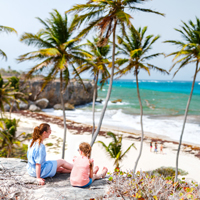1. Understanding the Driving Conditions
Driving in Reykjavik is generally considered safe and straightforward. The roads are well-maintained and the traffic is usually light. However, the weather can be unpredictable, with sudden changes that can make driving challenging, especially in winter. It’s important to always check the weather forecast and road conditions before setting off.
2. Choosing the Right Car
Due to the unpredictable weather and sometimes challenging road conditions, especially outside of Reykjavik, a 4×4 vehicle is often recommended. This type of car will handle better in snow and ice, and is also suitable for driving on the country’s many gravel roads.
3. Parking in Reykjavik
Finding parking in Reykjavik is generally not difficult, especially compared to larger cities. However, parking in the city center can be more challenging, particularly during peak hours. Parking fees apply in the city center and are divided into different zones, with the highest fees in the heart of the city. However, the fees are generally considered reasonable.
4. Driving with an International License
Foreigners can drive in Iceland with an international driving license or a driving license from any of the EEA countries. This is valid for up to one year. After that, you will need to obtain an Icelandic driving license.
5. Obtaining an Icelandic Driving License
If you’re moving to Iceland and plan to stay for more than a year, you’ll need to get an Icelandic driving license. This involves passing a theory test and a practical driving test. The theory test is available in English, but the practical test is usually conducted in Icelandic. It’s recommended to take a few driving lessons to familiarize yourself with Icelandic driving rules and conditions.
6. Respect the Speed Limits
Speed limits in Iceland are lower than in many other countries. In urban areas, the limit is usually 50 km/h, while on rural roads it’s 80 km/h on gravel roads and 90 km/h on paved roads. Speeding fines can be high, so it’s important to always respect the speed limits.
7. Be Prepared for Roundabouts
Roundabouts are common in Iceland, and they can be a bit confusing for those not used to them. Remember that traffic in the roundabout has the right of way, and you should always indicate your exit.


